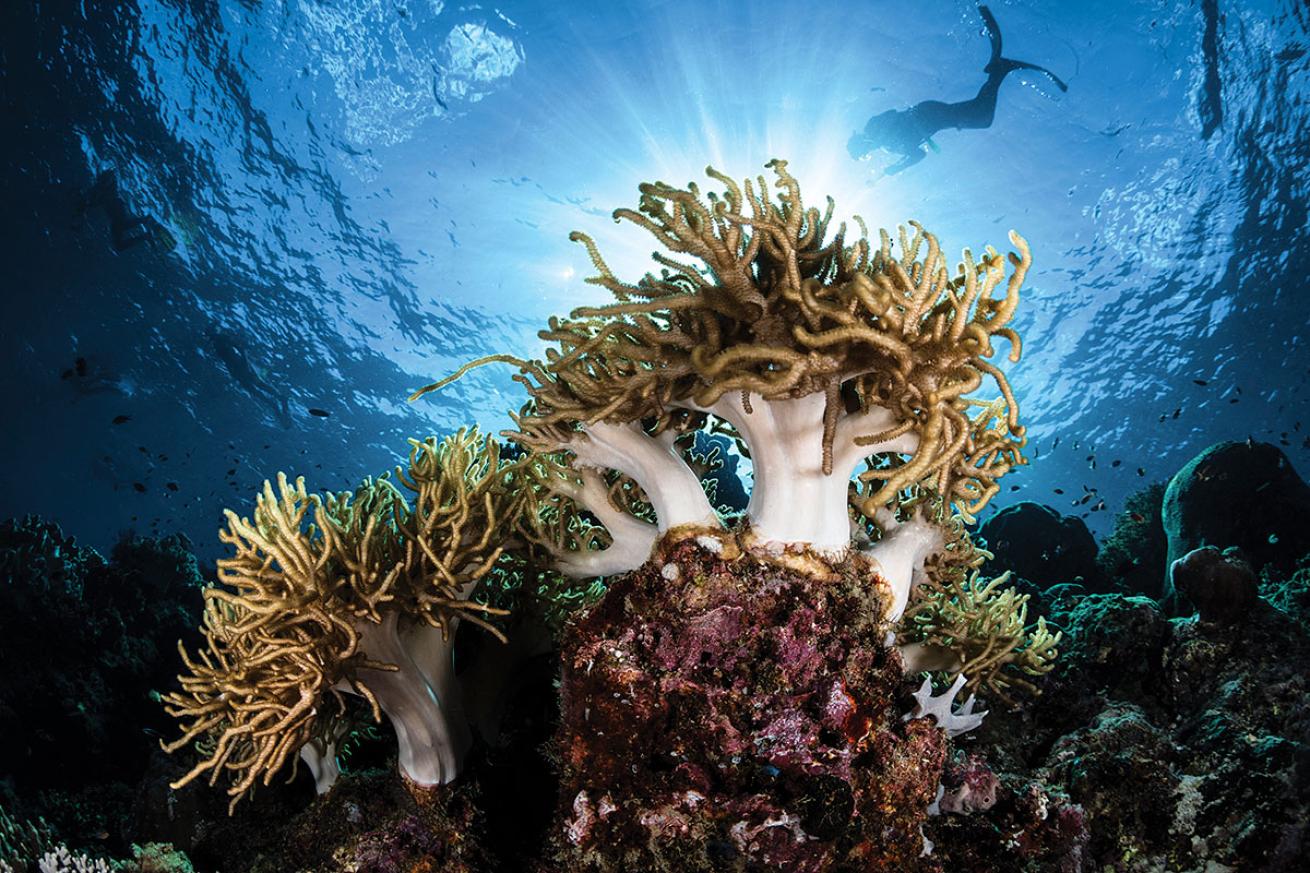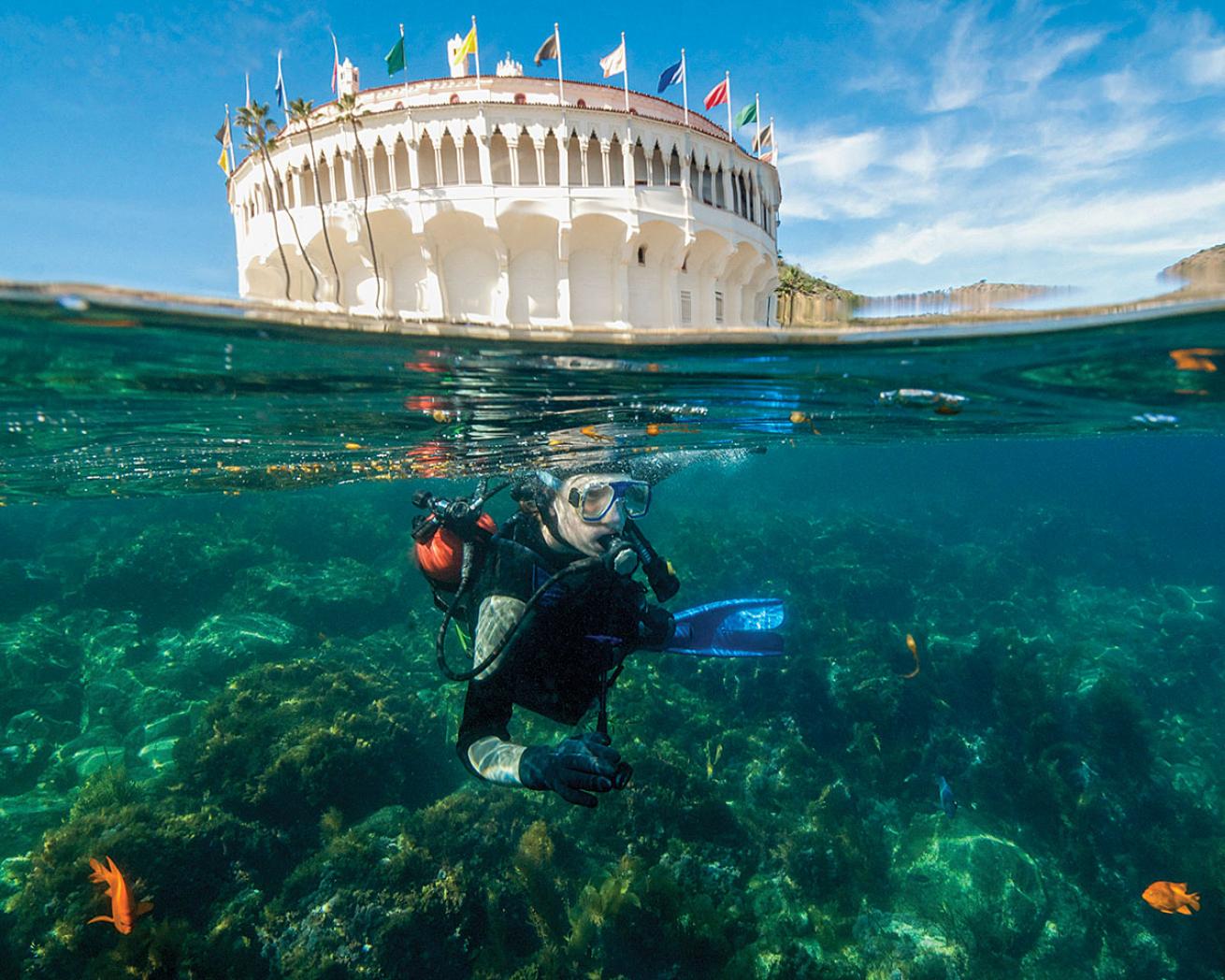Six Dive Destinations Known for Healthy Coral Reefs
Established marine parks and marine sanctuaries make up this list of scuba destinations known for their thriving coral reefs.
Each year, we ask our readers to participate in our annual Readers Choice survey to determine the best dive destinations, resorts, operators and liveaboards. Nearly 5,000 readers provided feedback this year, which helped us to identify the healthy coral reef destinations below. View the complete 2020 Readers Choice Award rankings here.
Bonaire
It’s one thing to make rules—it’s another to ensure they are enforced. Established in 1979, the Bonaire National Marine Park was a conservation leader, protecting the reefs off the entire coastline and outlawing anchoring anywhere in Bonaire waters.
Even before the founding of the marine park, the island passed legislation in 1961 to protect its turtles, and in 1971, prohibited spearfishing. As a result, the island’s coral reefs are every bit as vibrant as they were decades ago when the park was formed—and local dive centers are committed to keeping them that way.
“We do an orientation with every diver, explaining that our rules mean no touching, no taking, no gloves, no pointing sticks,” says Denise Korsten, dive manager for Plaza Beach and Dive Resort Bonaire. “We also check everyone’s sunscreen to make sure it won’t damage the reefs.”
What’s more, most resorts, including Plaza, ask guests to first do a checkout dive to guarantee they’re using proper weights to reach neutral buoyancy—so corals aren’t damaged by the 128,500 tourists visiting each year.
So far, it’s working. “Because of the rules, we see so many divers but almost no damage,” Korsten says. “It’s unique, really, that we have reefs still in this impressive condition.”
READERS PICKS
Resorts
Buddy Dive Resort, Bonaire
Divi Resort, Bonaire
Operators
Buddy Dive, Bonaire
Divi Dive Bonaire
Cayman Islands
In 1986, when the Cayman Islands formed a dedicated marine park with strict no-touch, no-take rules to protect its reefs, officials might not have known how ahead of the curve they were. Those actions have resulted in keeping the corals of the Cayman Islands some of the healthiest in the Caribbean. More recently, local dive operators on all three Cayman Islands banded together in 2008 to launch the Cayman 365 program, adding 68 new mooring balls to create enough sites for divers to drop in on a different one every day.
All these actions together relieve so much pressure on reefs that populations of animals big and small have exploded.
“I see every day that the reefs on Grand Cayman are thriving thanks to the measures they took 30 years ago,” says Sergio Coni, scuba instructor and operations manager at Don Foster’s Dive Cayman. Uncharacteristic of the island, the sites have also been sheltering big numbers of seahorses, frogfish and other macro finds. “This season in the sandy areas, we are seeing big blooms of nudibranchs,” Coni says.
Plus, more recently on night dives, Coni has been exploring the water column, coming across juvenile flounder, scorpionfish larvae and banded shrimps feeding at the surface. On the opposite side of the predation scale, eagle rays and tarpon remain common fixtures off the Cayman coast.
READERS PICKS
Resorts
Cayman Brac Beach Resort, Cayman Islands
Cobalt Coast Dive Resort, Grand Cayman, Cayman Islands
Compass Point, Grand Cayman, Cayman Islands
Little Cayman Beach Resort, Cayman Islands
Sunset House, Grand Cayman, Cayman Islands
Operators
Brac Scuba Shack Divers, Cayman Brac, Cayman Islands
Divetech, Grand Cayman, Cayman Islands
Don Foster’s Dive Cayman, Grand Cayman, Cayman Islands
Ocean Frontiers, Grand Cayman, Cayman Islands
Red Sail Sports, Grand Cayman, Cayman Islands
Reef Divers, Cayman Brac, Cayman Islands
Reef Divers, Grand Cayman, Cayman Islands
Reef Divers, Little Cayman, Cayman Islands
Sunset Divers, Grand Cayman, Cayman Islands
Liveaboards
Cayman Aggressor V, Cayman Islands
Indonesia

Shutterstock.com/Ethan DanielsHealthy corals are a haven for the diverse marine life that inhabits Indonesia.
Below the water, Indonesia has one of the most diverse ecosystems in the world. “This country is a huge archipelago, with thousands of small islands and big water masses moving through and creating strong currents— those strong currents make the water so incredibly nutritious that we have stunning and healthy coral reefs, each with thousands of inhabitants,” says Anastasia Kantzidou, cruise director for the Tiare liveaboard in Indonesia. The coral health is evident at any dive site. Take Raja Ampat’s Gorgonian Passage, for example. There, the sea fans wave 4 feet across. “The wall is just covered in these sea fans, and when the sun’s rays shine through, the ambience is very inspiring,” Kantzidou says.
Walls aside, most dives in Indonesia serve up something special. At the majority of sites, divers can encounter the tiny—shrimps and nudibranchs—to bigger fish like jacks, Napoleon wrasse, bumphead parrotfish, sharks and rays. “You see all of it, the big and the small, in one dive, which makes it so special,” Kantzidou says.
READERS PICKS
Resorts
Wakatobi Dive Resort, Sulawesi, Indonesia
Operators
Wakatobi Dive Resort Dive Center, Sulawesi, Indonesia
Liveaboards
The Arenui, Indonesia
Dewi Nusantara, Indonesia
Pelagian, Sulawesi, Indonesia
Cuba
Head to Cuba’s southern coast, and you’ll immediately notice miles and miles of undisturbed mangrove forests. This is not a place where much, if any, development has taken over the natural setting. Fertilizer and other runoff are not an issue.
“The coast is a breeding ground for all kinds of juvenile fish species all the way up to apex predators,” says Kevin Purdy with All Star Liveaboards, operator of the All Star Avalon II liveaboard based in Gardens of the Queen National Park. “It’s a unique environment where you have large mangrove channels and lagoons, and then offshore you find deep drop-offs.”
These drop-offs have yet to see big numbers of tourists thanks to the small number of local operators— and thanks to limitations that Cuba’s underwater parks place on the number of visitors per year.
“You see giant sea grass beds where conch populations are wildly abundant, and that, along with the big numbers of juvenile fish, leads to an abundance of stingrays and so on, all along the food chain,” Purdy says. Gardens of the Queen National Park is famous for bigger marine life, such as sharks.
It’s home to six species including silkies, lemons, Caribbean reef sharks and hammerheads. Come winter, sightings of whale sharks are possible. Also striking about the park is the number of interactions with bigger marine fauna. “With no threat to the fish populations, you see sharks that come in close—not in an aggressive way, but in a curious way, allowing you to have an encounter for much longer,”Purdy says.
Fiji
Fiji’s only neighbors are blue water and a sprinkle of undeveloped havens: Tonga, Samoa, Vanuatu. In other words, this patch of Pacific is as pure as it gets. “Fiji itself is quite far away from any developed nation, so there is almost no pollution in our water,” says Alex Ilnitsky of Beqa Lagoon Resort, based on the island of Beqa. This lack of stress on the reefs plays out in several ways, starting with acres and acres of soft coral gardens.
Moving up the food chain, sharks abound in this island nation. So much so that Ilnitsky, founder of a popular shark dive on Beqa, sees numbers between 20 and 30 most days.
Sharks are an excellent indicator for—and also promote—reef health. On Beqa, divers don’t just see big numbers of sharks—they also see a variety of species that includes lemons, bulls, tigers and blacktips. “Many regions tend to have just one species showing up. If you see one or two species dominating, then there is no balance, and that reef is not as healthy as those where you see variety,” Ilnitsky says.
READERS PICKS
Resorts
Beqa Lagoon Resort, Fiji
Operators
Beqa Adventure Divers, Fiji
California

Shutterstock.com/Brent BarnesA diver explores the protected waters off Catalina Island.
A small island with a big impact on the health of California’s marine ecosystems, Catalina has been a sanctuary since 1962. Casino Point Underwater Park, less than 30 miles from the Los Angeles coast, was one of the first marine parks in the country, allowing guests to shore dive to see the equivalent of underwater redwoods: giant kelp forests towering 100 feet. Thanks to more than five decades of protection, animals including the California two-spot octopus, angelshark, zebra goby, Spanish shawl nudibranch and kelp bass can be seen in big numbers.
Moreover, in recent years, the park has seen the comeback of the giant sea bass, which grows up to 7 feet in length.
Formerly in massive decline— almost to extinction— the fish is now rebounding nicely, with reports of 40 to 50 off Catalina. It’s one more piece of proof that marine preservation matters.










